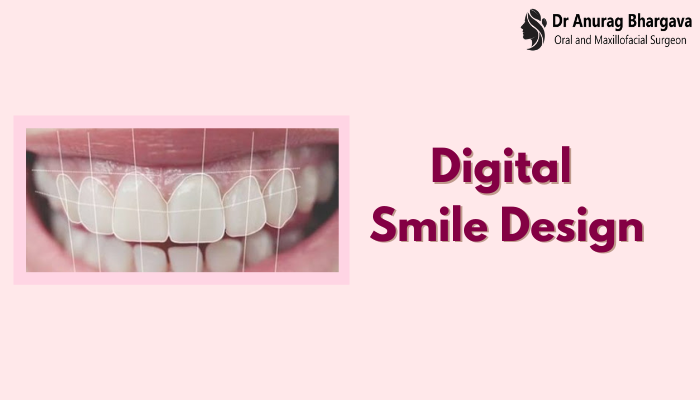A beautiful and bright smile is desired by everyone. But there are times when a patient wishes to have such a smile and is not sure about undergoing the treatment procedure for the same, as they are not able to visualize the outcome of their treatment. In that case, clinicians can use a tool called Digital Smile Designing (DSD). The concept of Digital Smile Designing focuses on helping the clinicians by improving the aesthetic visualization of the teeth that the patient is concerned about. They give an understanding of the solution which is possible for the situation and educate and motivate people about the benefits of the treatment by increasing the acceptance of the case.
Digital Smile Design is a digital model that is used in creating and projecting the new smile by acquiring a pre-visualization and simulation of the final result of that proposed treatment. A design that is created digitally includes the participation of the patients during the designing process of their self-smile design, which then leads to a personalization of smile design according to the needs and desires of the individual, that relates the patient to an emotional level by complimenting with the morpho psychological characteristics of that patient and also by enhancing their confidence in the process and better acceptance of their anticipated treatment.
How is the Digital Smile Design done?
The first step when you prepare yourself to learn more about dental smile design is the step of searching for a provider near you. You will go through the advantages of this treatment option from there, once you meet the provider. The dental provider will take 3D images and videos of your mouth from every angle if you decide to move ahead with the treatment. Then, a digital scan is executed with an intraoral scanner and the data is inserted into the DSD software.
Intraoral scanners provide you with more views of your mouth and thus, are very effective. Your technician would like every image to pop up on the screen in real-time during the scanning process. This makes sure the correct photos are being captured at the angles required to generate a visual representation of the ultimate result. You can save your time during the process by watching these photos, as you will not have to come again for any extra imaging once your consultation is completed.
The Final Procedure of Digital Smile Design
Once the data is inserted in the software, your dental provider will choose from the variety of shapes and forms that can be fixed over the tops of your teeth in the images at the digital library. This helps in giving the dental provider what exactly is wanted to create a physical model in a dental lab and also provides you with a quick glimpse into what you can actually expect from this treatment. The videos and photos help the lab to produce a more practical model, which may involve many important aspects including your facial aesthetics.
You will be actively participating in the entire procedure from beginning to end. The dental provider may even be able to place some portions of the model temporarily in your mouth to provide you with a better visual of what your teeth will appear like as you smile and speak.
After your approval, the dental provider will start the restoration procedure. As a preparation guide, this process often includes keeping the model or mock-up in your mouth. Any damaged teeth or fragments will be restored and veneers or implants will be placed as restored teeth. The provider, before moving on to the next teeth, will restore every individual tooth. At last, the procedure comes to an end with a polishing treatment that will make your teeth look clean and shiny.
Kinds of DSD software:
- Photoshop CS6
- Smile Designer Pro (SDP)
- Aesthetic Digital Smile Design
- Exocad DentalCAD 2.3
- VisagiSMile (Web Motion LTD)
- DSD App by Coachman (DSDApp LLC)
- Cerec SW 4.2 (Sirona Dental Systems Inc.)
- Planmeca Romexis Smile Design (PRSD)
- NemoDSD (3D)
- DSS (EG Solution)
This was all about digital smile design and its procedure. We hope you like the article. Do share your queries and feedback in the comment section below.

